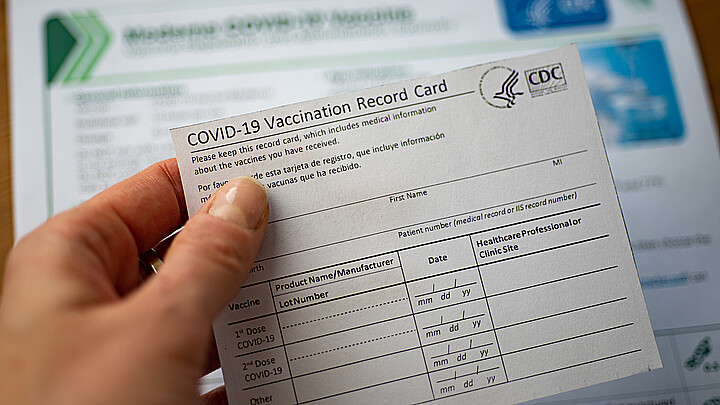Coronavirus
CDC significantly reduces original U.S. omicron infection rate estimates
The CDC says there was "a wide predictive interval posted in last week’s chart," and the downward revision was due in part to the "speed at which Omicron was increasing"
December 29, 2021 3:45pm
Updated: December 30, 2021 2:02pm
The Centers for Disease Control and Prevention (CDC) announced on Tuesday that it had reduced its estimate for how prevalent the omicron variant is in the United States, stating that the new COVID-19 variant was only responsible for 22.5 percent of new cases in the week that ended on Dec. 18 – not 73.2 percent as it originally reported last week.
The numbers are rapidly changing, however, and the CDC said omicron accounted for 58.6 percent of all new cases for the week ending Dec. 25.
Jasmine Reed, a spokesperson for the CDC, told reporters that there was "a wide predictive interval posted in last week’s chart," and the downward revision was due in part to the "speed at which Omicron was increasing."
"CDC’s models have a range, and… we’re still seeing steady increase in the proportion of Omicron," Reed told Fox News Digital. "In some regions in the country, Omicron accounts for ~ 90% or more of cases."
The Trump administration’s former surgeon general, Dr. Jerome Adams, also spoke with Fox News and explained that the revision was likely due to a responder bias caused by a testing flaw known as the “S gene drop out,” in which one of the three target genes is not detected – often leading to a false-positive detection.
"A lot of people were seeing this S dropout on the tests even before they got the follow-up genetic testing, and so those samples were disproportionately more likely to be sent in for sequencing," Adams added.
Dr. Li Tang, an associate faculty member in the department of biostatistics at St. Jude Children's Research Hospital, remains confident that as the CDC collects more data, it will be better able to detect the various variants found throughout the country.
"Earlier, they probably relied on a small number of available sequences. It should be also noted, although the confidence interval now is narrower, the range is still big, covering from 41.5% to 74%, suggesting large uncertainty," Tang told Fox News Digital.
The new estimates mean that the delta variant was still dominant for most of December, though omicron has a slight edge now.
But while cases have been rising sharply across the country as Americans continue to travel during the holidays, researchers have stated that rising case numbers is not as important as hospitalization rates.
Mary Mayhew, president of the Florida Hospital Association noted that although hospitalizations are low, admissions are indeed rising and providers are preparing for the worst.
"Hospitals are evaluating their staffing models," Mayhew said. "They are assessing any contracts that they may need for additional staffing, and they are analyzing all of their physical plant space to be ready."
Ultimately, however, what's to come remains unclear as the omicron variant continues to infect Americans across the country.
"It’s also important for people to understand that in the grand scheme of things, they really were probably just a week or two ahead of what we’re going to see anyway, because omicron is spreading so quickly that it is going to be 73% by the time you look at this week’s or next week’s numbers," Adams said.










